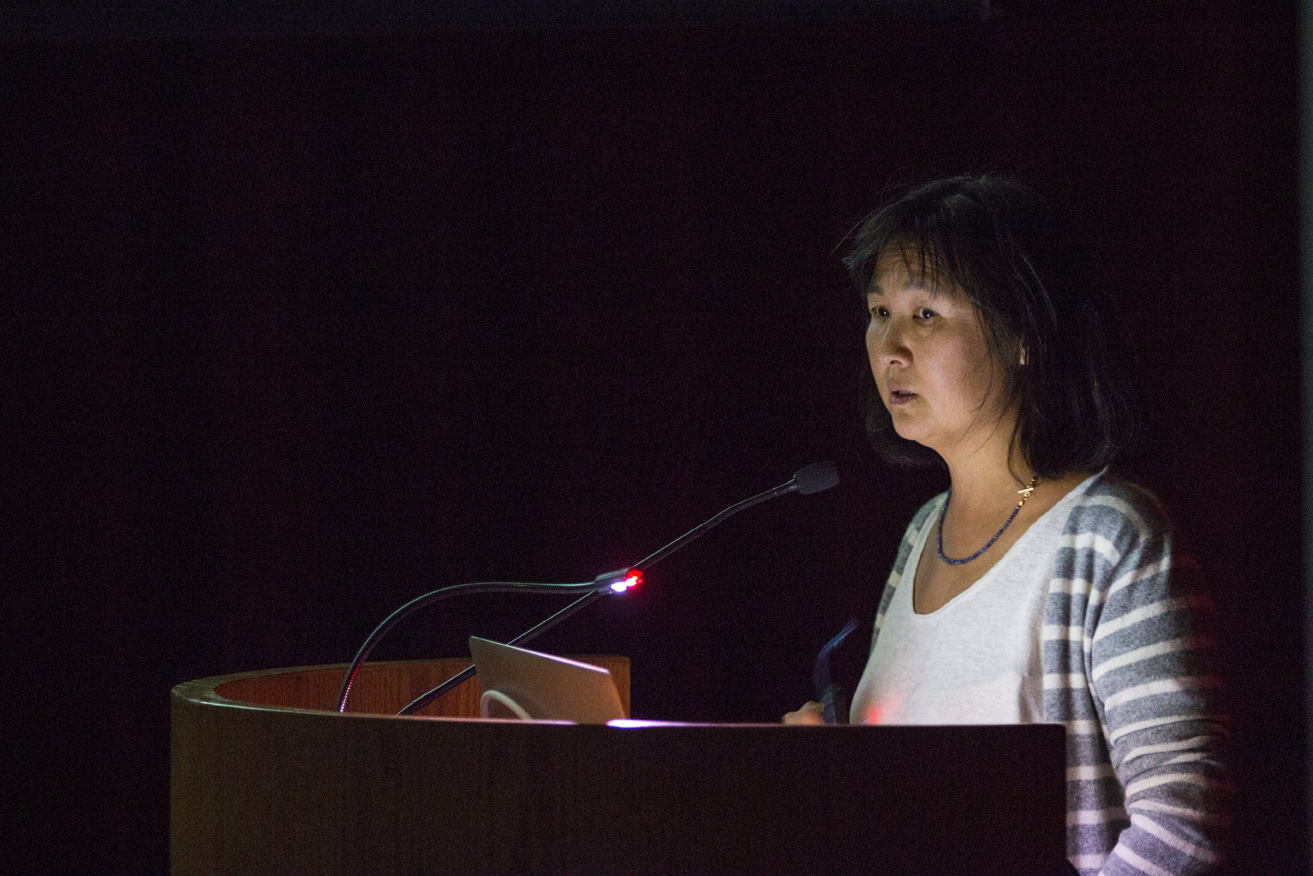
“My work has always been about the environment,” Maya Lin ’81 ARC ’89 noted in a lecture given at the Yale University Art Gallery on Oct. 7. Indeed, Lin, that most prodigious of alumni architects who famously designed the Vietnam Veterans Memorial while a senior at Yale, spent a large portion of the lecture evangelizing about the dangers of climate change. But the time Lin spent stepping off her soapbox and discussing the intersection of her art with its environment proved far more insightful.
While flipping through a PowerPoint displaying her recent work, it became clear that Lin has shifted her focus from architecture to art, mainly the sculptural. She has stepped away from the memorials and monuments that catalyzed her meteoric rise, though these still echo in many of her contemporary pieces.
The geometry blurring into abstraction of Lin’s Vietnam Veterans Memorial recurs throughout her recent oeuvre. Lines fascinate her, with thickness, curvature and course lending each line a distinctive character and energy. Over the past decade, she has taken to constructing great grassy mounds reminiscent of ancient American burial sites. These mounds curl and wind through rural dairy fields and manicured patrician yards alike. With titles such as “Eleven Minute Line,” “Flutter” and “A Fold in the Field,” each charts a peculiar trajectory and creates a unique experience for the viewer. From the ground, they appear as humps reverberating in the landscape, but from the air their true forms are revealed. They are modern Nazca lines, but they represent no mythology or animal. Quietly they slither and roll, tactile and suited to tread upon and touch. In these, Lin seeks to discover “how a sculptor can draw three-dimensionally,” and the results are primal, elemental and exquisite.
These lines, though, interact not only with the viewer, but also with the environment they are a part of. They will shift and sag, their soil will erode and wash away as the forces of nature and time beat upon them. Here they are akin to the great earthworks constructed during the latter half of the 20th century, particularly Robert Smithson’s “Spiral Jetty,” whose once tightly arranged black rocks have whitened and spread over their four decades in the Great Salt Lake. Lin craves this effect, and, as she said, “part of the goal is that [the art] does change.”
Such a fluid conception of art, interactive and in motion, contrasts with the stasis of the Western canon’s traditional media. Michelangelo’s immutably chiseled marble statues and Raphael’s perpetually smiling Madonnas will appear nearly unchanged in another 400 years. But what will be the fate of Lin’s lines? Their dynamism, ambiguity and uncertainty excites. A work so inextricable from its environment necessarily usurps from the artist the power of creation and places it in nature’s hands. This, perhaps, is the ultimate abstraction, and the lines which nature scribbles upon its own landscape are the truest and the most perfect.
The rest of Lin’s art posits more challenges to our ideas regarding art’s essence. She recreates natural landscapes indoors, building with countless cubical blocks the rise of a hill and the dip of a valley. “I am intensely interested in that space between things,” Lin said. We see this in her topographical sculpture of a mountain range, “Systematic Landscapes,” its peaks separated into a grid of squares, between which the viewer walks and gazes upward.
Similarly, many of her pieces derive from maps and geography. In “Folding The Chesapeake,” she limns in innumerable glass marbles the estuaries and bays of the titular waterway throughout an entire room in Washington, D.C.’s Renwick Gallery. The Chesapeake’s tendrils spread across walls, spill onto floors and creep upon windowpanes. And so the landscape becomes the experience, though not as completely as in her earthworks.
In another piece, “Where the Land Meets the Sea,” she twists wire until it contorts into the submerged topography of the ocean floor. The thin metallic filaments cast fragile shadows upon the wall and ground nearby, and soon it becomes unclear whether the true artwork is the piece itself or the shadows the piece casts. By smudging the lines of what is considered art, Lin truly does create a “space between,” a grey area where the artist considers both the art and all it might interact with.
Lin has radically fused her art with its environment. No longer does art merely decorate a wall or serve as a conversation starter. It melds with everything around it and takes part in the cycles and sweeps of the larger world, from the shadow created by the light of the shining sun to the gradual erosion and degeneration of everything outdoors. The artist relinquishes control of her art and, in doing so, animates it and allows it to do as it, and the world, will.
Despite these fascinating pieces, Lin dedicated an outsized segment of the lecture to discussing her efforts at combating climate change and global environmental degradation. While her attempts are commendable, the artist has always fared far better as a creator than as a pulpiteer. Her art is her testimony and her legacy. The problem of climate change is a behemoth no one activist can conquer, but the quest of art has always been forged by the individual. Lin may try nobly to stall global warming, but, through her art, she has already changed the world.







